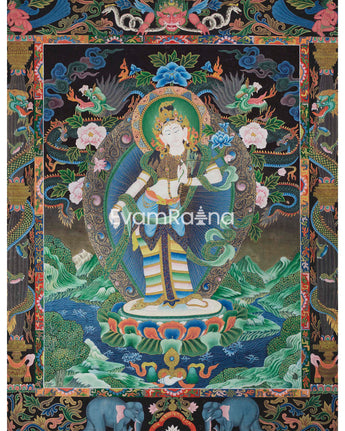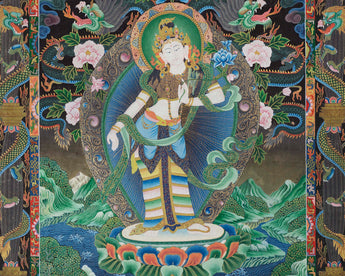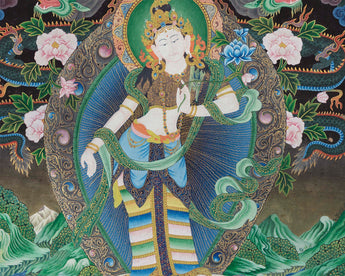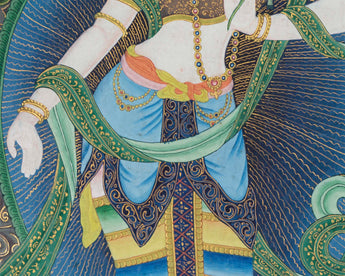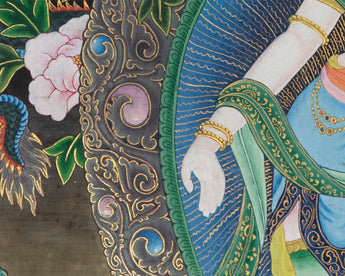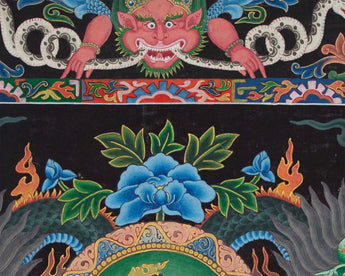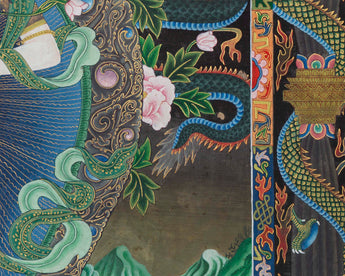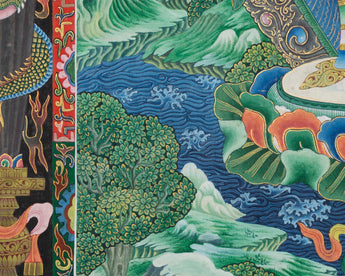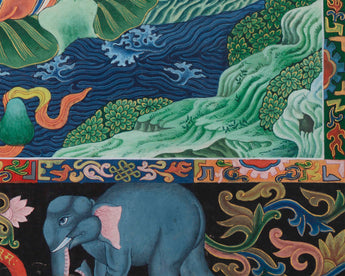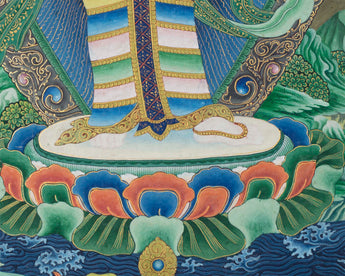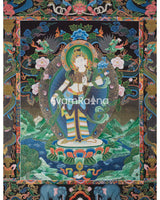
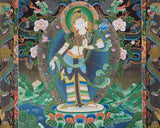
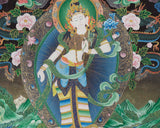
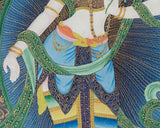
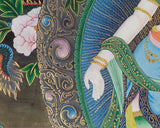
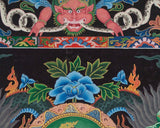
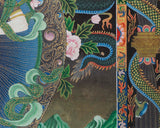

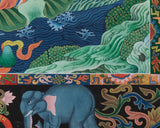

Lokeshvara Tibetan Prints | Meditation Paubha Art

100% AUTHENTIC

FREE SHIPPING
Lokeshvara Tibetan Prints
Introduction To Thangka Print
Lokeshvara wears all the ornaments: earrings, bracelets and so forth .He also wears an antelope skin on his shoulders and carries various weapons in his hands. Lokeshvara is a cosmic form of Avalokiteswara and is represented with eleven heads and one thousand arms .He is adorned with all the six jewels and is dressed in a monastic robe.
Lokeshvara is also the spiritual father of White Tara and Green Tara who were said to be formed from his two drops of tears when he saw the pain and suffering in the sentient beings. They are all boddhisattvas (liberators of the sentient beings from pain and suffering) who have very prominent spots among the Tibetan Deities.
How does Thangka benefit us?
It goes without saying that every detail of a painting has a symbolic meaning. Regardless of your religious affiliation, a thangka can help you on your path to enlightenment, whether you practice Buddhism or have other religious convictions. Thangkas are paintings that depict deities with various iconographic elements and symbolism that encourage meditation on the teachings of the god they depict. Any thangka is intended to aid in the removal of the film of ignorance, which is a significant barrier to the road to enlightenment. The Thangka is revered as a holy item. They promote positivity, spread Buddhism's teachings, bring about peace, harmony, and oneness, and dispel any negative energy that may be there.


